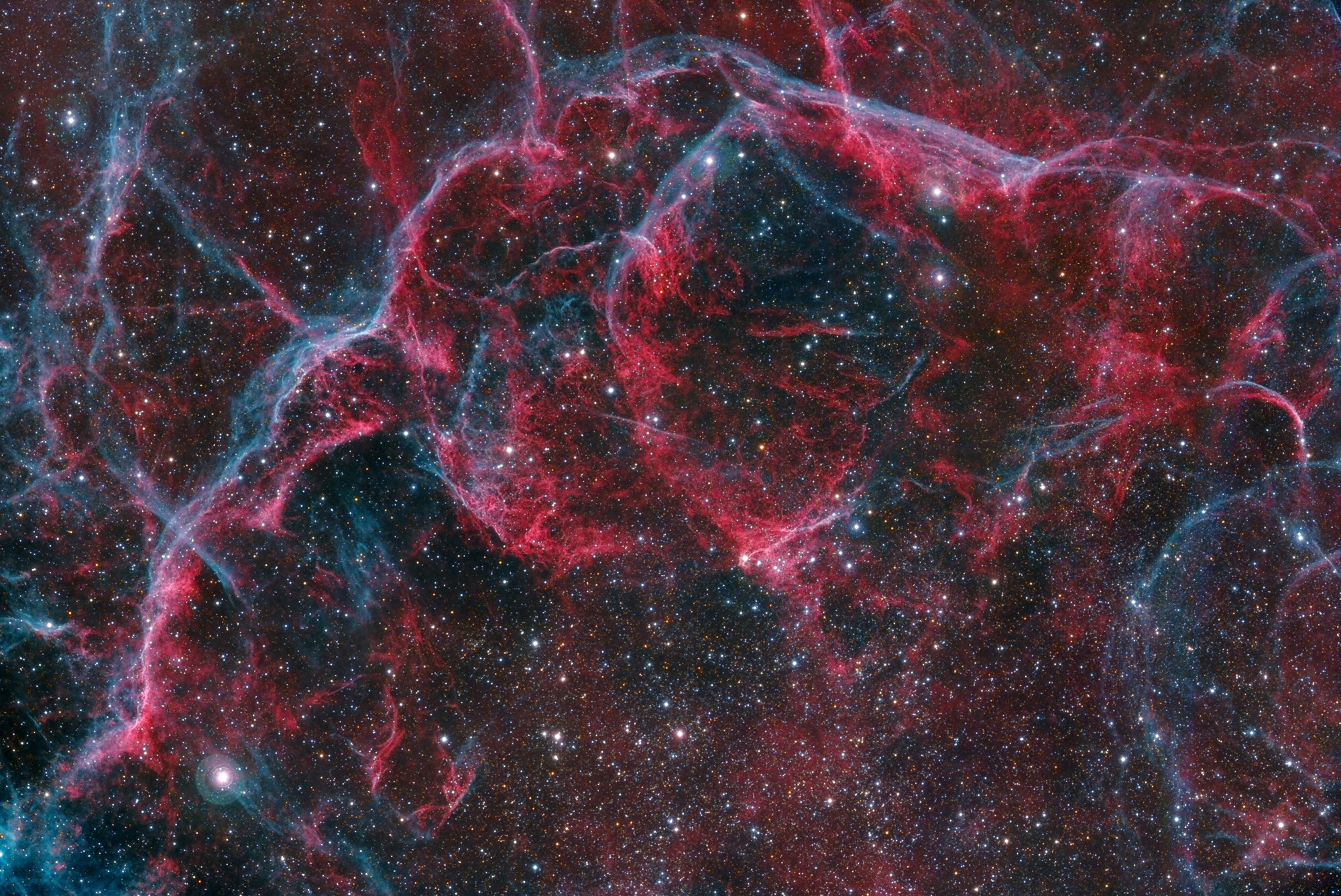
This vast wreath of glowing gas was ejected after a massive star went supernova around 11,000 years ago in the constellation Vela the Sails. Lying over 800 light-years away, the supernova’s filamentary remains are scattered across the sky. One of the closest cosmic cataclysms to our Sun, it is also among the most historic.
In the mid-1950s, astronomers found in Vela one of the largest radio sources in the heavens. Not until 1960 did they link the radio source to a filamentary nebula visible in optical wavelengths — what we now call the Vela supernova remnant (SNR). Eight years later, Australian astronomers raised the possibility that the Vela Pulsar, a 23rd-magnitude neutron star, was the source of the remnant. This was one of the first proposals indicating that neutron stars are forged in the aftermath of certain types of supernova explosions.
Without question, much of the Vela SNR is a target for wide-field astroimagers, as this spread of wispy threads spans 4.5° of sky. The Pencil Nebula (see #52) is its brightest segment. Two other sections are worth targeting under very dark skies with larger apertures. The first is a narrow 1′-long streak of light, oriented northwest-southeast, around R.A. 8h32m, Dec. –45°30′; this feature will extend into a 4′-long crescent with greater apertures. The other is a pale phantom filament (oriented east-west) a few arcminutes northwest of 4th-magnitude e Velorum (HD 73634).
To explain the object’s haphazard structure, European Southern Observatory astronomers have proposed a scenario in which multiple objects have interacted with the Vela SNR, including the binary system Gamma2 (γ2) Velorum, the IRAS Vela Shell, the Vela OB2 association, and the Gum Nebula.









